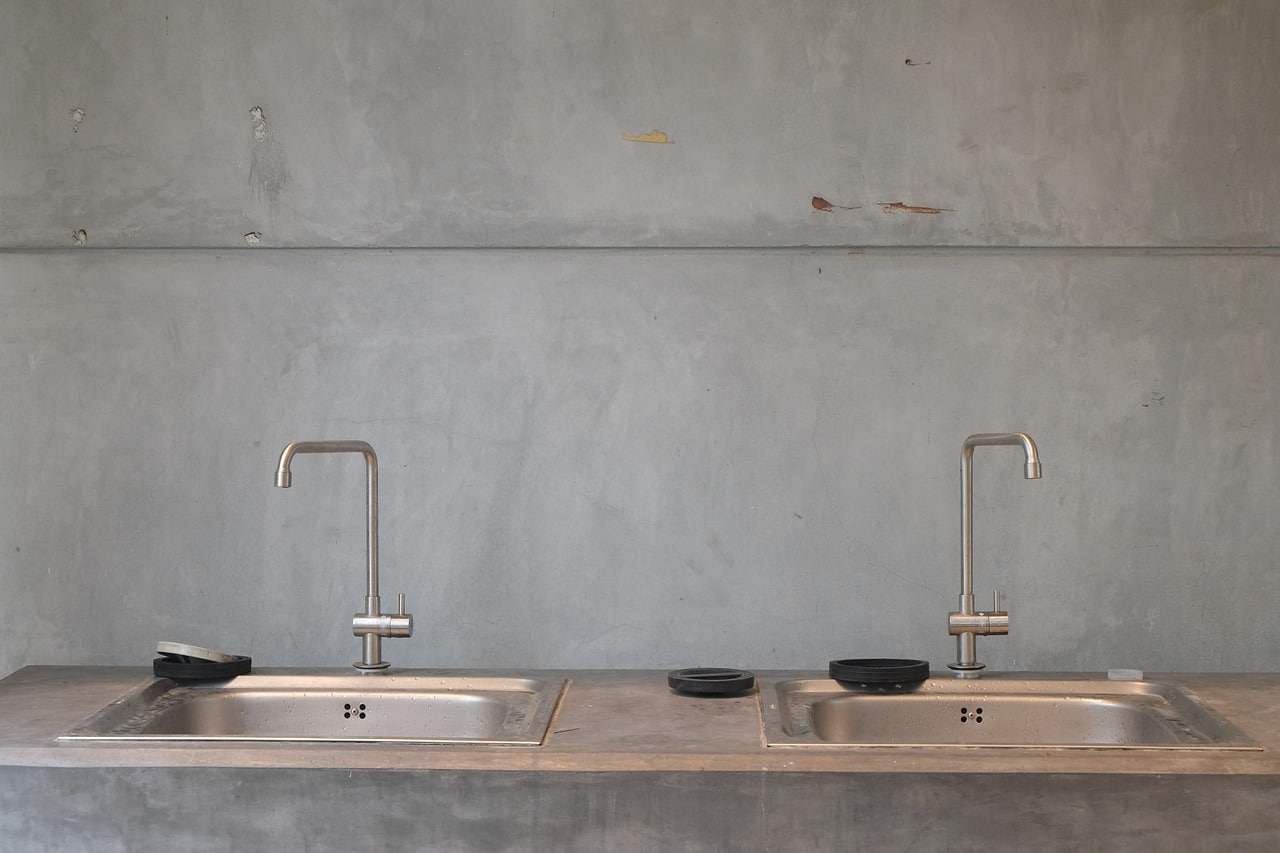The kitchen sink is certainly the center of any modern kitchen. No matter how big or small a kitchen is, it would be terribly incomplete or even crippled if the sink is faulty or is plagued with design issues. A matching kitchen faucet and bar faucet setup is ideal if your main sink area has issues, too. There is no shortage of faucet types to choose from.
The best ones for modern kitchens include brass kitchen faucets, Kohler kitchen faucets, two-handle kitchen faucets, touchless kitchen faucets, and of course, top of the line luxury kitchen faucets. We recommend commercial-style kitchen faucets and excellent faucets under $200 and faucets under $100 for those with a more moderate budget for more professional kitchens.
What Is the Difference Between a Bar Faucet and A Kitchen Faucet?
We’re sure that many people don’t know the difference between a regular kitchen faucet and a bar faucet. And that’s okay! Normally people have one central faucet at home, and one sink is the main sink. However, when the kitchen was first made, design limits may have inadvertently created issues with kitchen counter space and sink space. Issues like this one are often fixed with the creation of another sink – called a secondary sink. The secondary sink allows two people to work simultaneously in the kitchen. The second sink can vastly improve the productiveness of those working in the kitchen.
Due to space constraints, the secondary sink is often smaller than the main sink. Since the sink is smaller, installing a tall, full-sized faucet in the secondary sink would be strange. That’s where smaller taps or bar faucets are installed, instead. Bar faucets are smaller and more compact, but they are just as useful as full-sized faucets. Bar faucets are also called “prep faucets” because you can use the sink mainly for washing fruits, vegetables, and other ingredients before cooking. Bar faucets and secondary sinks are often installed near the gas range or stove because it takes too many steps to walk from the gas range to the central sink. So in terms of efficiency, a secondary sink does make things easier for everyone working in the kitchen.
And that’s not all – if you position your secondary sink and bar faucet near the mini-bar, it can serve as a source of water, so it becomes part of the drinks station, too. Add a mini-fridge underneath, and you are equipped with plenty of options for shaking drinks into existence.
What size faucet for bar sink?
Bar sink faucets usually rise no more than 13 inches from the sink level. Nine-inch bar faucets are common, too.
What size faucet for the kitchen sink?
The standard height for a kitchen faucet is at least eight inches to over 13 inches. The actual height varies depending on the brand and makes of the faucet. The height of the faucet should complement the size of the sink. If you have a tiny sink and the faucet’s spout is too high, you may get splashed while working in the sink.
Can We Use Kitchen Faucets Instead of Bar Faucets Or Vice Versa?
The decision to use a kitchen faucet (a full-sized one) or a bar faucet greatly depends on your kitchen layout. Bar faucets tend to be smaller because they are usually installed in smaller, secondary sinks.
Secondary sinks are more diminutive and scale-wise; it would look strange for a small sink to have a big faucet. If your secondary sink is as wide and deep as your primary sink, then perhaps a standard kitchen sink would look appropriate as well.
Tips for Picking the Best Faucet
They don’t make faucets the same way they did decades ago. Faucets now are more modern and useful, and there is a ton of brands and makes to choose from. Don’t let the number of choices wear you down. Here are some easy steps to help you determine what type of faucet is best for your secondary sink and primary sink in the kitchen.
- Maintenance level – Faucets have different maintenance levels. For instance, regular faucets will have rubber gaskets and discs inside, and these eventually wear down depending on the average water pressure and how much the faucet is used. The newer faucet models are the ones that have ceramic discs inside, and with proper use, the ceramic-disk faucets can outlive the faucets with rubber discs. Ceramic-disk faucets will also require little to no repair even after years of regular. The reason for this is that manufacturers insert fire-hardened ceramics into the faucets instead of regular rubber gaskets. Ceramics will outlast rubber any day, and this also explains why the higher-end faucets with ceramics tend to be pricier.
- Hygiene level – If you live in a bigger household with more people accessing and using the kitchen, consider investing in a touchless faucet instead of a more conventional one-handle or two-handle faucet. Touchless faucets are certainly more hygienic, and they are also cost-efficient because they have built-in “low flow” modes that can help you save on water costs in the long term. However, they do cost more than regular faucets, so you also have to factor in a new touchless faucet’s costs.
- Cost-effectiveness – As we have touched upon in the previous item, some manufacturers now include water-saving features in their faucets. Saving water is critical if you don’t want your water bill to increase because your faucet produces more pressure with every use.
- Efficient operation – The faucets’ efficiency is measured by the overall design and how the faucet performs in different conditions. A faucet that was advertised to be “high-performance” or “commercial-level” should deliver a better experience than other faucets. Many newer faucets have added features that allow the faucet to deliver higher pressure with a touch of a button or with a turn of a lever.

